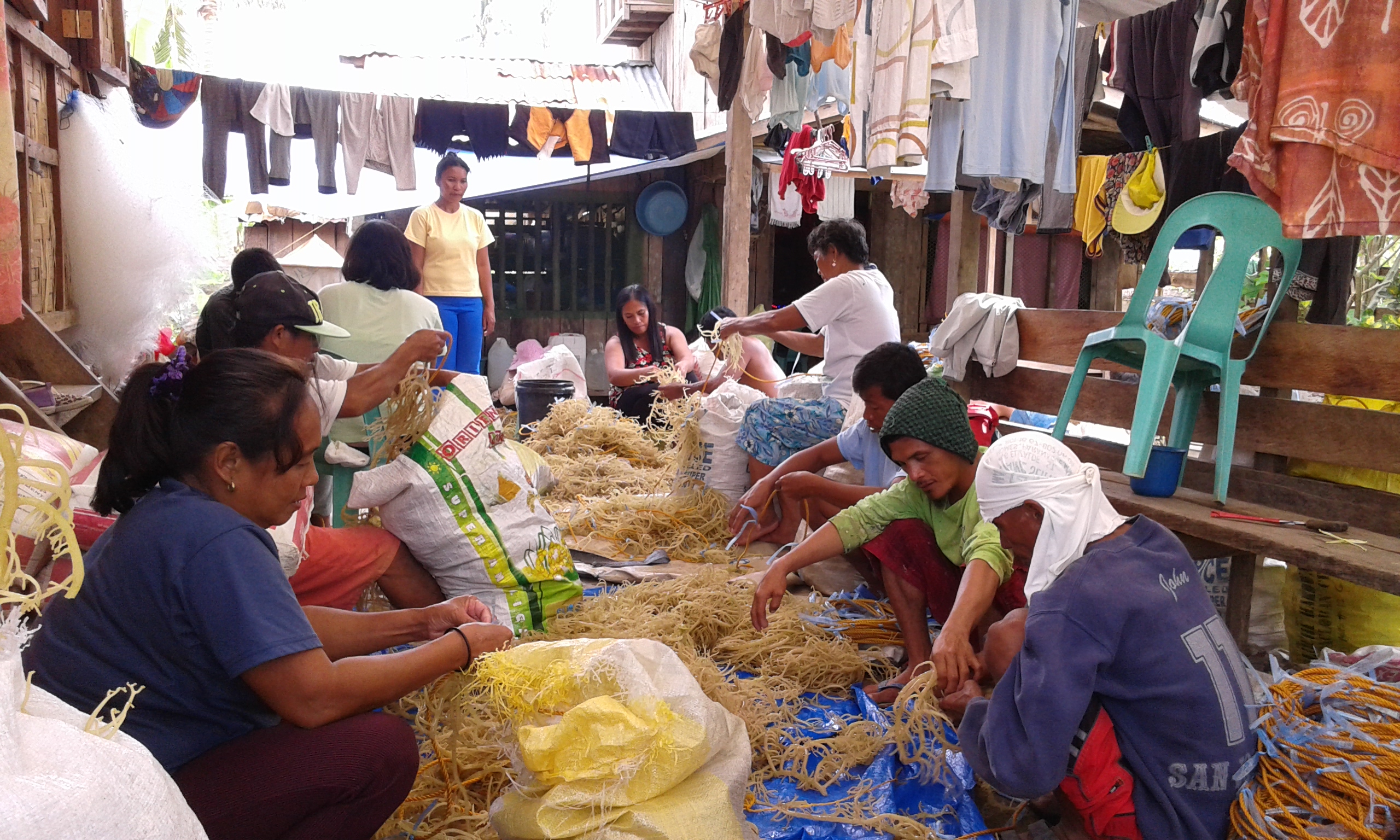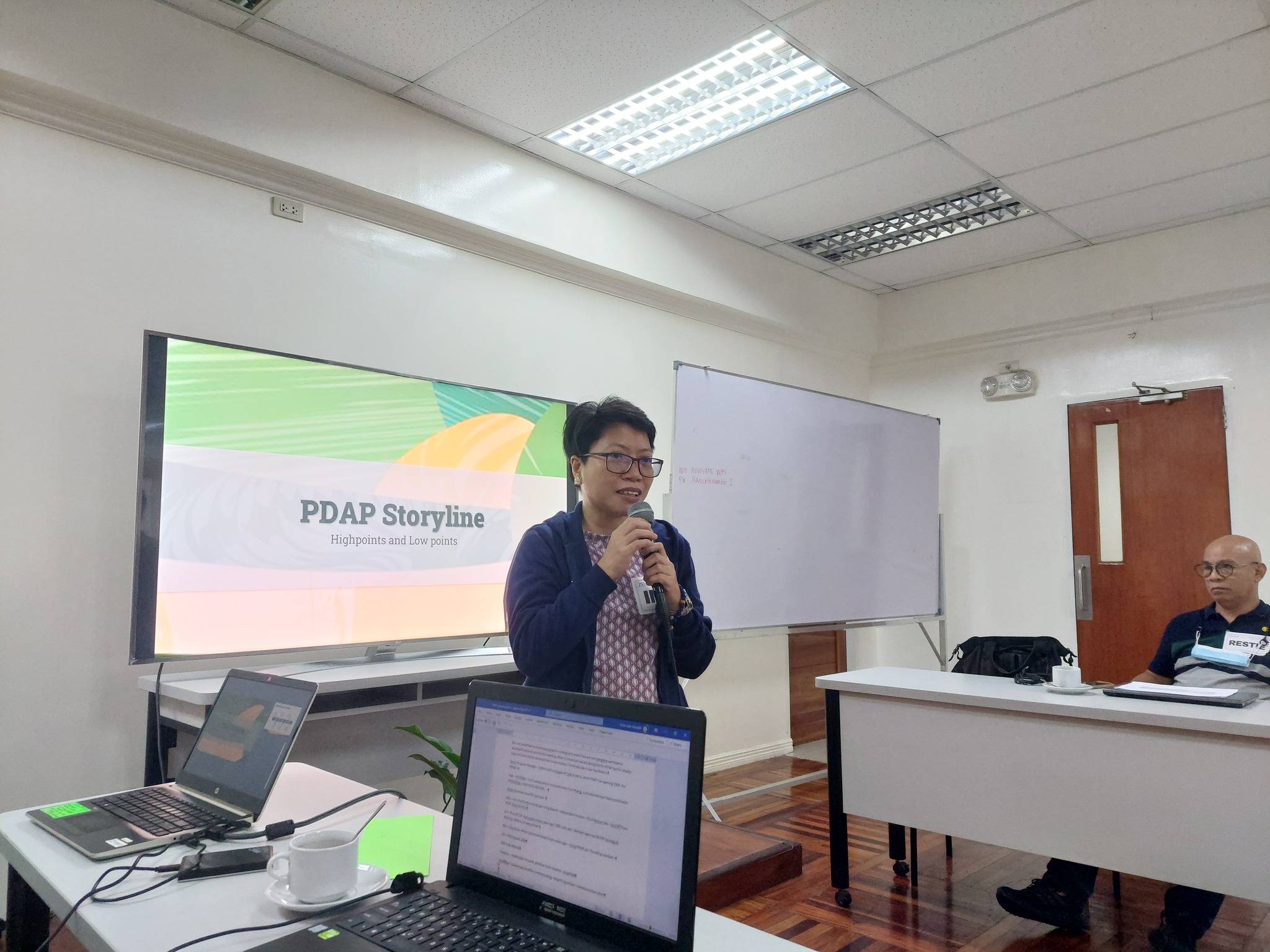“SITANGKAI SEAWEEDS”
Located just 14 kilometers of the coast of Sabah, Malaysia, in the Philippines’ southernmost province of Tawitawi, is the municipality of Sitangkai, the country’s seaweed capital and the ‘Cottonii Seaweed Capital of the World’.
One of the 10 municipalities of Tawitawi, Sitangkai’s land mass consists of 12,750 hectares, a province of 307 islands and islets.
Sitangkai’s biggest island, Sibutu is host to a historical site of religious significance being the location of the burial site of Sheikh Makhdum, the Arab missionary who introduced Islam andbuilt the first mosque in the Philippines in the 9th century.
Its town proper, also called Sitangkai, is a bustling commercial center where many products from Malaysia and Indonesia are displayed and sold alongside the Philippines. Sitting on a strand that is barely one square kilometer in area, Sitangkai town proper is often called the “Venice of the Philippines” owing to its residential area and houses built on stilts and corrals with intricate canals and waterways reminiscent of Venice, Italy.
For centuries, the people of Sitangkai made a living from the rich marine ecosystem that surrounds the area. Situated in the Sulu-Sulawesi Seas, which account for 30% of the world’s coral reefs, fihing and harvesting of other marine products such as sea cucumber, sea urchin and sea mantis provide its people a major and stable source of income.
Eighty percent of its population, or about 20,000 individuals, rely on seaweeds for their living. Upon the advent of the seaweed industry in the area that began in the early 1950’s, many people from Sitangkai shifted to seaweed farming as their primary means of livelihood and income.
Seaweed cultivation in Sitangkai, Tawitawi is dominated by the ‘cottonii’ type because of the high demand in the market for kappa carrageenan which has diversifid applications.
The seaweed farmers of Sitangkai live in small villages-on-stilts called pondohans, which are constructed in shallow coral reef areas in the middle of the sea. Made of temporary and substandard construction materials like bamboo and nipa shingles, these pondohans are erected within the proximity of their seaweed farms to improve accessibility of the farmers to their farm sites and at the same time double as shelter and drying areas for harvested seaweeds.
Originally intended as half-way houses or places for stop-over, the pondohans are maintained by the seaweed farmers for as long as the seaweed thrives well in the area. It is not surprising therefore, to see pondohans that have been in existence for 30 or even 40 years.
On the average, a seaweed farmer maintains a farm size of one-fourth hectare that earns him or heran income of Php 21,800.00 annually. Fishing and harvesting of marine products serve as secondary or supplementary source of income for the family.
PDAP3Of the over 100 existing pondohons which are home to over 10,000 seaweed farmers, Three have greatly benefitted from PDAP’s PRIME Program – Sipangkot, Sikulan, and Tinambak. These three pondohans were formalized into associations duly-recognized by the Department of Labor and Employment, been given capacity-building trainings, and provided with stilt driers. Two of the three sites now have seaweed nurseries.
These pondohans have also benefied from PDAP initiatives to improve the plight of Sitangkai’s seaweed farmers such as access to export markets and constant price monitoring.
“PDAP’s intervention in the seaweeds industry is different from other PRIME commodities – muscovado sugar and organic rice – since it was PDAP-PRIME who initiated the formation of the seaweed farmers associations and the strengthening of the local seaweed industry,” Evangeline Faburada, PDAP project staff said.
Based on the baseline survey conducted by PDAP in 2006, the three sites have similar circumstances and challenges, which is somewhat reflective of all the pondohans in Sitangkai.
Most seaweed farmers earned less than Php 50,000.00 a year, with very few earning Php 100,000.00 and above. Household expenses were within Php 20,000.00 per year. Most farmers in the three sites cultivate seaweeds in just one parcel. To make both ends meet, most of the seaweed farmers raise poultry, are into fihing and aquaculture, and even participate in trading enterprises.
The high cost of production inputs, pests and diseases, limited access to better paying markets and lack of access to credit are the problems besetting the small seaweed farmers of Sitangkai.
“Seaweeds production involves many activities – clearing and posting, preparation of seedlings and planting materials, building a farm house, maintenance of planted seaweeds and harvesting and drying – which entail many costs. Many materials are also needed for maintenance and operation of the farm like mangrove posts, bamboo, pointed iron materials, bull hammers and banca,” MursidiArola, Sikulan Seaweed Farmers Association president, shares.
In 2006, the cost of producing seaweeds for one parcel ran to over Php 26,000.00, most of it was for the purchase of seedlings and planting materials, rental of boats and farm machinery, purchase of line, straws and flaters, and processing and drying fees.
Pest infestation, like the presence of seaweed-eating animals such as sea urchins, starfish and other predators were also major problems of seaweed farmers. Natural calamities and unfavorable weather conditions like strong currents or turbulent winds were also identified.
The farmers also lamented the high cost of hiring farm laborers. Normally, 2 to 5 men are needed for maintenance of a one-hectare seaweeds farm to clean the area and remove any dirt that clings to the seaweeds.
“In the past, farm labor was free because seaweed farming was a collective effort of the entire community. Now, people want to be paid either in cash or in kind for their efforts, maybe because of hard times or simply because people have become opportunistic,” Ibno J. Juaini, Sipangkot Seaweed Farmers Association president, laments.
Farmers also complained about the high cost of marketing, which is dictated by numerous factors such as convenience and distance from the farm to the buyer or trading stations, absence of infrastructure facilities such as farm-to-market roads and bridges, as well as the purchasing terms and other conditions set by the buyer.
“On the average, we spend almost Php 1,500.00 for marketing costs, which is basically the cost of transporting our produce to the traders or buying stations,” explains Almujir A. Abduraup, Tinambak Seaweed Farmers Association president.
Being the preferred buyers of most seaweed farmers for their produce, traders practically dictated the price of raw seaweed. It comes as no surprise therefore, that farmers often fell prey to unscrupulous traders.
While seaweed farmers are the bulwark of Sitangkai’s economy, it is sad to note that their living conditions remain poor. They still lack even the most basic needs like potable water, electricity, technology and telecommunications, even education.
Generally, a large portion of their household income is generally spent on food and the rest goes to other basic needs such as education, allowance, medical needs and clothing.
The entry of PDAP was via the crafting of the ‘SitangkaiSeaweeeds Master Plan’, with the Local Government Unit (LGU), other donors and concerned local stakeholders. Ocular visits, surveys and initial meetings with the core groups of identifid people’s organizations followed.
Formal organizing of communities, installation of stilt driers and nurseries, and the creation of the Sitangkai LMC (local market consolidator) Carageenan Corporation, were undertaken. The LGU was also assisted in crafting the seaweed master plan. Market access for the small seaweed farmers was facilitated initially through the Sitangkai Seaweeds Export Company (SITEXPORTS), which exports raw dried seaweeds to Cargill in France. The corporation is now in negotiations with the Chinese market and is ready to commence trading once the contract is secured.
Dramatically, the intervention of PDAP was able to at least improve the farm yield of farmers by 15percent. However, income-wise, the return is not signifiant due to unstable market demand and price fluctuations.
Thus, PDAP-PRIME employed the diversification approach to supplement the primary income source of farmers. The farmers were taught to culture abalone and glacilaria, a joint project between PDAP and the USAID-funded Grant for Equity in Mindanao (GEM) program.
The turning point for PDAP’s intervention was the provision of stilt driers and nurseries, which helped to increase volume and improve the quality of produce. The knowledge imparted to the farmers via a host of training programs improved farming technology, mitigated the effect of diseases and pests, and increased yield.
“Although these outcomes are part of our expectations when we began our interventions in Sitangkai, with the operationalization of SLMCC the results will be greatly optimized,” Jerry Pacturan, PDAP Executive Director, says.
For now, the three pondohans, like most of Sitangkai’s seaweed farming community, can hope of at least a fair chance of escape from the centuries-old cycle of poverty that have mired them. As Jolly Ahaja, CEO of SITEXPORT, PDAP-PRIME’s trading partner in Sitangkai, puts it,
“The fact that we have made headway in breaking the monopoly of trading in Sitangkai, and are slowly but surely operationalizing the Sitangkai LMC Corporation, is a good start.”
![]()






